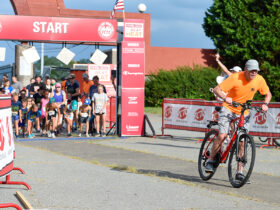In between the last “normal” race year of 2019 and the hybrid year of virtual and in-person events of 2021, 2020 changed the face of racing. Probably for good.
That “for good” has a couple of meanings.
According to RunSignup’s 2021 Annual Industry Report, racing made many strides toward getting back to the familiar contours of racing. But while racing saw a 21.6% increase in participation in 2021 over 2020, there is still a 23% decline from 2019.
Nearly 80% of 2021 registrations were for in-person events, but virtual options were still a popular option: 20% of registrations in 2021 vs. 1% in 2019.
The uncertainty that persisted in 2021 (races flipping back and forth between in-person and virtual, changing dates) may have led to a drop in repeat participation in 2021—12% in 2021 compared to 17%-18% in 2017-2019. But this is an opportunity to get back on the radar of previous racers and on the radar of new racers as we move into a—hopefully!—more stable 2022.
It’s important to remember that virtual participants are different from those that opt to join races in-person, and this is an opportunity. We can transform new participants into regular racers by being creative, whether through hybrid events, virtual challenges or beginners’ race series.
Demographic breakdowns offer opportunities
While the gap between male and female participation has shrunk, women still make up the majority of race participants—55% in 2021.
Participation of runners ages 18-39 declined from 2019 to 2020 and again from 2020 to 2021. They left and haven’t come back.
In the 40-59 age group, participation increased in 2020 and declined in 2021.
All other age groups saw an overall increase from 2019 to 2021, one (under 18) dropping in 2020 and bouncing back in 2021 and the others seeing a steady increase.
How can the racing community respond?
We can think of women when we plan races, promotion and even giveaways. Remembering that older runners may continue to opt for virtual options even as younger runners return to in-person racing, we can keep virtual options on the table. For younger runners, we may want to tap into their social awareness and love of social activities by highlighting our relationships with charity partners, encouraging team participation and including runs that promote causes in our community.
Overall, it’s good to remember that people have different levels of comfort, different schedules and different expectations than they did before March 2020. How can we make running and racing in the Triad exciting, challenging and fun for our Runner Friendly Community?











